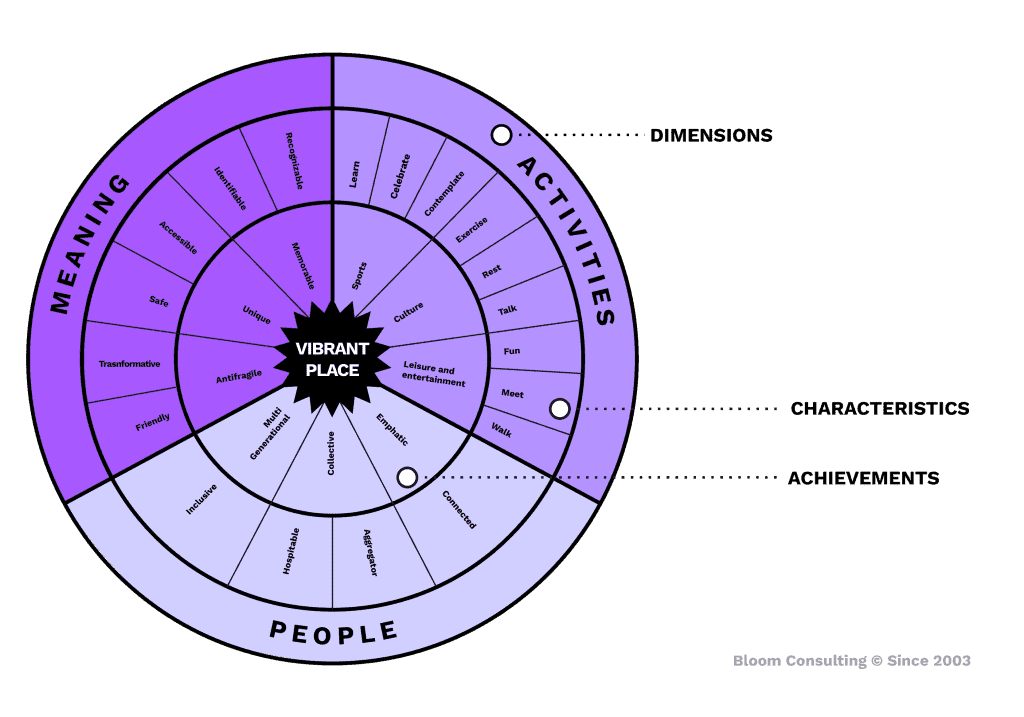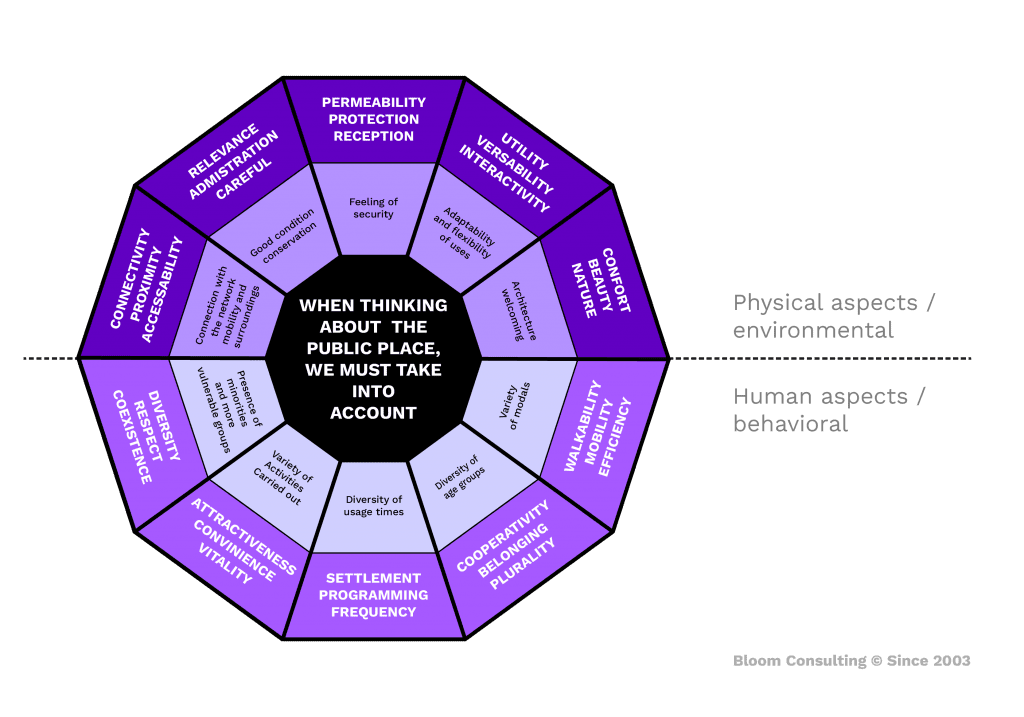The term “Placemaking” is self-explanatory. When we discuss “Placemaking”, even if in a somewhat counterintuitive way, we automatically understand it as a process or method that involves “making a place”. At Bloom Consulting, we advocate for the necessary overlapping of the layers of Place Branding and Placemaking, emphasizing perception and experience working hand-in-hand. We call this process Placemaking I.D. ©.
Placemaking is often described as a process of enhancing places. While this statement holds truth, we prefer to delve deeper by identifying a key quality in a place: vibrancy. In this way, we understand Placemaking as the process of creating vibrant places. However, the term “vibrancy,” though largely understood, requires a more specific definition.
Vibrant Place = People + Meaning + Activities
With the formula above, we recognized the need to further explore the concept. What exactly do “people,” “meaning,” and “activities” entail?
With this in mind, we created the Bloom Consulting Vibrant Places Wheel ©, as shown below:

This tool helps identify characteristics within each dimension responsible for creating a vibrant place.
This graphic challenges a common misconception: that a place’s most crucial element is its hardware – its immovable/physical aspects like buildings and infrastructure. The Bloom Consulting Vibrant Places Wheel © demonstrates exactly the opposite, the need, at best, for physical equipment to anchor activities previously mapped or proposed based on prior mapping with the local community.
A core principle of Placemaking.ID © is community engagement, emphasizing that a vibrant (and thus quality) place only exists if it contemplates the desires of the community that uses it while recognizes and strengthens their identities and cultures.
But is built space not important?
While behavioural aspects and activities (software) hold greater importance, the built space (hardware) also plays a crucial role, especially in the requalification of existing places. In such cases, a physical evaluation of the place is also necessary.
This evaluation process is based on three fundamental questions:
1. Who uses the place?
2. How do you use the place?
3. What is this place like?
These questions are answered based on not only spatial analysis – which would demonstrate the physical and environmental characteristics of the location in question – but also the behavioural dimension of the use of public spaces based on the user profile, frequency of use and the way in which they access the environment.

The analysis of each public place, based on the criteria presented in the graph, involves extracting information by observing the behavioural and physical spheres. Each of the dimensions analyzed (physical-environmental / human-behavioural) provides a base so that together they give a refined and holistic overview of the place.
A vibrant place is not just a public space with good construction quality and provision of equipment, it is, first and foremost, a place understood by users, embraced by the community and, most importantly, widely used. The hierarchy between hardware (equipment) and software (activities) is evident in the Placemaking.ID © process,which is a reflection of what can be observed on a daily basis. After all, how many public spaces with benches, gardens, and equipment lack users? Conversely, how many spaces, lacking structure or quality, are still extensively used, even in an improvised manner?










